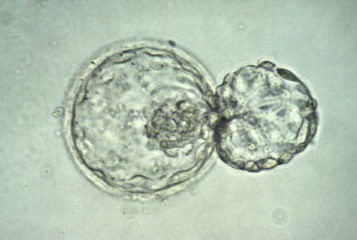Survival rates of patients needing bone marrow transplants are unaffected by whether they receive stem cells from blood or bone marrow, say scientists. Both sources for collecting stem cells, which are currently used to treat blood cancer patients, were compared and found to have different advantages.
Talking to Health magazine, Dr Claudio Anasetti, lead author of the study and professor of medicine at the University of South Florida, said: 'With bone marrow, you have the same survival, but less long-term morbidity'. Although peripheral blood cells were also shown to have some benefits, 'it's not a one choice for all situation'.
In cancers that affect the production of blood cells, treatment often destroys both the cancer cells and the healthy stem cells that produce the body's blood cells. These stem cells need replacing and can be harvested from either bone marrow or peripheral blood. The use of stem cells from blood has rapidly grown due to easy accessibility and their ability to grow quickly, however whether the origin of the stem cells influences the survival of patients has not previously been investigated.
The study looked at 551 patients with blood cancer and split them into two groups; those who received peripheral blood stem cell transplants and those who received bone marrow transplants. Two years after the transplants, the overall survival rates between the two groups were no different. However more subtle differences were observed.
Scientists looked at rates of graft failure, where the transplanted cells fail to function, and graft-versus-host disease (GVHD), where the transplanted cells attack the patient's own tissues. GVHD results in a variety of symptoms including dry eyes, skin rashes and organ damage, and can also be fatal.
Results showed there may be a slightly lower risk of graft failure with the use of peripheral blood stem cells, however chronic GVHD may be more likely. This led Dr Fred Appelbaum, executive director at the Seattle Cancer Care Alliance who was not involved in the study, to suggest that stem cells from bone marrow should be used in preference to those from peripheral blood.
'If the donor and recipient are not identical twins, the graft attacks its new host. We give immune suppression to reduce this response', Dr Appelbaum said in an interview with Health magazine. 'But for those who get peripheral blood, there's a higher incidence of a severe, chronic immune response that can greatly diminish a person's quality of life'.
Dr Anasetti concluded: 'More effective strategies to prevent graft-versus-host disease are needed to improve outcomes for all patients receiving unrelated donor transplants'.
The study was published in the New England Journal of Medicine.





Leave a Reply
You must be logged in to post a comment.